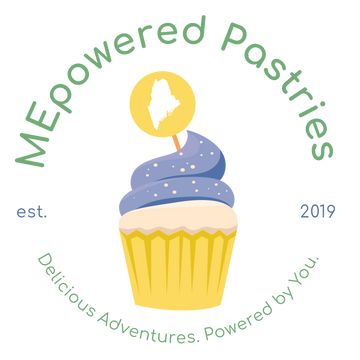Family Food Waste Toolkit

(Find Scrappy Recipe Cards at the bottom)
Managing food waste effectively when you have kids can feel as insurmountable as the pile of food of partially eaten snacks and meals that builds instantaneously when a kid steps into a room.
Why is Food Waste a Problem Worth Tackling
But it’s a problem worth addressing.
Food waste costs you money
Maine households waste close to 130,000 tons of food waste annually, The about the same weight as a Suzemax tanker
According to Food Rescue Maine, the average Maine household wastes almost $2000 each year on food that's not eaten. Additionally wasted food raises the cost of food in general because of the increased waste of all the time, money, and resources that goes into the production of every single food item.
Food waste hurts the environment
Food waste is a leading contributor of climate change. US food waste generates more greenhouse gases than the entire airplane industry and the same amount as 42 coal fired power plants.
Wasted food = wasted resources
Food wastes accounts for 22% of US agricultural water use. One wasted egg is equal to an 11 minute shower.
Currently food waste results in 64 million Kwh of wated energy. That's enough to power 50 million homes for one year.
Food insecurity and wasted food
1 in 8 people in Maine are food insecure (and 1 in 5 children). We must make sure perfectly good food is not wasted and that any surplus food is feeding people and animals instead of our landfills.
How Can Your Family Manage Food Waste?
Here is what you can do to save money, our planet, and our precious resources by reducing your family's food waste.
Start with a food waste audit.
The best place to start is by understanding where you are wasting food the most and thinking about solutions to your food waste habits.
You can download our food waste audit HERE and fill it in each week as a family.

Once you've seen where your biggest food waste offenders are, you can refer to our food waste solutions chart to determine the best way to turn your food waste into food treasure.
Remember: We want the trash to be our last resort. As with handling other types of waste we want to prioritize: Reuse, Upcycle, Recycle. You can see how that translates into food waste solutions on the chart below. You can also download it HERE

Turn Food Waste into Food Treasures with Scrappy Recipes
One of our favorite waste to "upcycle" food is through scrappy recipes. Remember this is only for food we refer to as "safely edible.
What does safely edible mean?
Safely edible food is food that is safe to eat.
Maybe it's leftover from another recipe, like a half used can of pumpkin from pumpkin pie.
Maybe it's food that's safe to eat but not as pretty, like a brown banana, smashed berry, or bruised avocado.
Or maybe (especially if you have kids), it's a half eaten banana, a apple with a few bites out of it, a fruit they begged you for at the store and then decided it lacked it's excitement once home. For these items you can cut the nibbled part of and use the rest (although I recommend still only sharing these for family consumption).
Food that are not safely edible or things that have gone bad or are moldy, in mot cases, these should be composted (you can learn more about composting with NRCM's composting toolkit).
Scrappy Muffins and Brownies
These are two of my favorite scrappy recipe because you can make them so varied and easily experiment to find the things you like best. They are both GREAT way to get kids involved in the process and help them be more aware of the food being wasted and positive solutions that don't involved a landfill.

(If you made a muffin mix with us at Sustainable Scarborough all you need to add are the wet ingredients above (1 egg. 1/2 tsp vanilla, 1/4 cup maple syrup or honey, 1/4 cup butter, and your scrappy ingredient)

